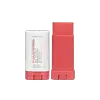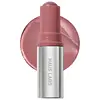What's inside
What's inside
 Key Ingredients
Key Ingredients

 Benefits
Benefits

 Concerns
Concerns

 Ingredients Side-by-side
Ingredients Side-by-side

Squalane
EmollientCaprylic/Capric Triglyceride
MaskingBis-Diglyceryl Polyacyladipate-2
EmollientOctyldodecanol
EmollientOzokerite
Emulsion StabilisingPolyisobutene
Synthetic Wax
AbrasiveMicrocrystalline Wax
Emulsion StabilisingSilica
AbrasiveCI 77891
Cosmetic ColorantSynthetic Fluorphlogopite
CI 15850
Cosmetic ColorantMica
Cosmetic ColorantCI 19140
Cosmetic ColorantGlyceryl Caprylate
EmollientCI 77492
Cosmetic ColorantEuphorbia Cerifera Wax
Tin Oxide
AbrasiveCI 45410
Cosmetic ColorantTocopheryl Acetate
AntioxidantLimnanthes Alba Seed Oil
Skin ConditioningTriethoxycaprylylsilane
Isopropyl Titanium Triisostearate
EmollientMacadamia Integrifolia Seed Oil
Skin ConditioningParfum
MaskingLinalool
PerfumingSqualane, Caprylic/Capric Triglyceride, Bis-Diglyceryl Polyacyladipate-2, Octyldodecanol, Ozokerite, Polyisobutene, Synthetic Wax, Microcrystalline Wax, Silica, CI 77891, Synthetic Fluorphlogopite, CI 15850, Mica, CI 19140, Glyceryl Caprylate, CI 77492, Euphorbia Cerifera Wax, Tin Oxide, CI 45410, Tocopheryl Acetate, Limnanthes Alba Seed Oil, Triethoxycaprylylsilane, Isopropyl Titanium Triisostearate, Macadamia Integrifolia Seed Oil, Parfum, Linalool
Diisostearyl Malate
EmollientOctyldodecanol
EmollientPolyglyceryl-2 Triisostearate
EmulsifyingSynthetic Wax
AbrasiveCaprylic/Capric Triglyceride
MaskingPropylene Glycol Dibenzoate
Skin ConditioningPolybutene
Bis-Behenyl/Isostearyl/Phytosteryl Dimer Dilinoleyl Dimer Dilinoleate
EmollientEuphorbia Cerifera Cera
AstringentEuphorbia Cerifera Wax
Polyglyceryl-6 Polyricinoleate
EmulsifyingCoco-Caprylate/Caprate
EmollientArnica Montana Flower Extract
MaskingSqualane
EmollientPseudozyma Epicola/Camellia Sinensis Seed Oil Ferment Extract Filtrate
HumectantPrunus Armeniaca Kernel Oil
MaskingPseudozyma Epicola/Apricot Kernel Oil/Olive Fruit Oil/Sunflower Seed Oil/Sweet Almond Oil/(Angelica Gigas/Lithospermum Erythrorhizon) Root Extract Ferment Extract Filtrate
Pseudozyma Epicola/Sunflower Seed Oil Ferment Extract Filtrate
Emulsion StabilisingTocopheryl Acetate
AntioxidantLycium Barbarum Fruit Extract
AstringentCopernicia Cerifera Wax
Butyrospermum Parkii Butter
Skin ConditioningCaprylic/Capric/Succinic Triglyceride
EmollientCastor Oil/Ipdi Copolymer
Propylene Carbonate
SolventSorbitan Sesquioleate
EmulsifyingStearalkonium Hectorite
Gel Forming1,2-Hexanediol
Skin ConditioningCI 77492
Cosmetic ColorantCI 77891
Cosmetic ColorantCI 15985
Cosmetic ColorantCI 15850
Cosmetic ColorantCI 42090
Cosmetic ColorantDiisostearyl Malate, Octyldodecanol, Polyglyceryl-2 Triisostearate, Synthetic Wax, Caprylic/Capric Triglyceride, Propylene Glycol Dibenzoate, Polybutene, Bis-Behenyl/Isostearyl/Phytosteryl Dimer Dilinoleyl Dimer Dilinoleate, Euphorbia Cerifera Cera, Euphorbia Cerifera Wax, Polyglyceryl-6 Polyricinoleate, Coco-Caprylate/Caprate, Arnica Montana Flower Extract, Squalane, Pseudozyma Epicola/Camellia Sinensis Seed Oil Ferment Extract Filtrate, Prunus Armeniaca Kernel Oil, Pseudozyma Epicola/Apricot Kernel Oil/Olive Fruit Oil/Sunflower Seed Oil/Sweet Almond Oil/(Angelica Gigas/Lithospermum Erythrorhizon) Root Extract Ferment Extract Filtrate, Pseudozyma Epicola/Sunflower Seed Oil Ferment Extract Filtrate, Tocopheryl Acetate, Lycium Barbarum Fruit Extract, Copernicia Cerifera Wax, Butyrospermum Parkii Butter, Caprylic/Capric/Succinic Triglyceride, Castor Oil/Ipdi Copolymer, Propylene Carbonate, Sorbitan Sesquioleate, Stearalkonium Hectorite, 1,2-Hexanediol, CI 77492, CI 77891, CI 15985, CI 15850, CI 42090
 Reviews
Reviews

Ingredients Explained
These ingredients are found in both products.
Ingredients higher up in an ingredient list are typically present in a larger amount.
This ingredient is an emollient, solvent, and texture enhancer. It is considered a skin-softener by helping the skin prevent moisture loss.
It helps thicken a product's formula and makes it easier to spread by dissolving clumping compounds.
Caprylic Triglyceride is made by combining glycerin with coconut oil, forming a clear liquid.
While there is an assumption Caprylic Triglyceride can clog pores due to it being derived from coconut oil, there is no research supporting this.
Learn more about Caprylic/Capric TriglycerideCi 15850 is the pigment color red. It is an azo dye and created synthetically.
Azo dyes need to be thoroughly purified before use. This allows them to be more stable and longer-lasting.
This ingredient is common in foundations, lipsticks, and blushes. This color is described as brown/orangey red.
It has many secondary names such as Red 6 and Red 7. According to a manufacturer, Red 6 usually contains aluminum.
Learn more about CI 15850Ci 77492 is also hydrated iron III oxide. It's sole purpose is to give a yellow hue to products.
Iron III oxides are classified as inorganic chemicals for coloring.
Synthetically created Ci 77492 is considered safer than those naturally found. This is because the synthetically created version may contain less impurities. Iron oxides are generally non-toxic and non-allergenic.
Learn more about CI 77492Ci 77891 is a white pigment from Titanium dioxide. It is naturally found in minerals such as rutile and ilmenite.
It's main function is to add a white color to cosmetics. It can also be mixed with other colors to create different shades.
Ci 77891 is commonly found in sunscreens due to its ability to block UV rays.
Learn more about CI 77891Octyldodecanol is a fatty alcohol. It is primarily used to enhance the texture of products.
As an emulsifier, Octyldodecanol helps prevent the oils and waters from separating. It also prevents ingredients from creating foam when shaken.
Octyldodecanol is created by reducing fatty acid to an alcohol.
Due to its high molecular weight, it does not get absorbed into the skin.
Learn more about OctyldodecanolSqualane is an emollient that helps the skin hold onto moisture. It's an oily liquid that occurs naturally in certain types of fish and plant oils.
Because squalane boosts hydration in the skin, it also comes with plenty of benefits: it is an antioxidant and can help fight free radicals and skin damage. Squalane is also found to have a detoxifying effect when applied.
Squalane comes from squalene, which occurs naturally within the sebum of our skin. It is one of the oils our skin produces to keep itself hydrated. Squalane is the hydrogenated version of squalene and has a longer shelf life.
Research shows that squalane is non-irritating (even at 100% concentration).
In general, it's a fantastic ingredient. It does a great job at hydrating the skin, and it's suitable for those with sensitive skin.
The source of squalane may impact malassezia / fungal acne. This is because olive oil derived squalane can contain impurities such as fatty acids and plant waxes. Sugarcane derived squalane is recommended for anyone with malassezia concerns.
Is squalane vegan?
This depends on the source. Squalane can be derived from both plants and animals. Most squalane used in skincare comes from plants.
Please note: the source of squalane is only known if disclosed by the brand. We recommend reaching out to the brand if you have any questions about their squalane.
Read more about squalene with an "e".
Is squalane an oil?
Squalane is often called an oil, but it’s technically not; it’s a hydrocarbon, meaning it’s only made of carbon and hydrogen, unlike true oils which are triglycerides made of fatty acids and glycerol.
The term “oil-free” isn’t regulated, so companies can define it however they want. Some exclude all oils, while others just avoid mineral oil or comedogenic oils.
While some people avoid oils thinking they cause breakouts, the right kind of oil (or oil-like ingredient like squalane) can actually help balance and hydrate your skin. It’s worth testing out simple oils or squalane to see what works best for your skin.
Learn more about SqualaneSynthetic Wax is created from fossil fuels such as natural gas. It is used to enhance texture, adjust pH, and as an occlusive.
It may also be used as an abrasive ingredient to exfoliate the skin.
Synthetic Wax may not be fungal acne safe.
Learn more about Synthetic WaxTocopheryl Acetate is AKA Vitamin E. It is an antioxidant and protects your skin from free radicals. Free radicals damage the skin by breaking down collagen.
One study found using Tocopheryl Acetate with Vitamin C decreased the number of sunburned cells.
Tocopheryl Acetate is commonly found in both skincare and dietary supplements.
Learn more about Tocopheryl AcetateEuphorbia Cerifera wax comes from a shrub in Northern Mexico. It is used to stabilize formulations and has emollient properties.
Emollients form a thin layer on top of skin to prevent water from evaporating, keeping skin and lips hydrated.
According to a manufacturer, this wax can range from a yellow/brown color to translucent.
Learn more about Euphorbia Cerifera Wax